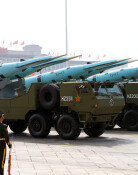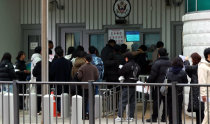Government to Supply 2.6 Million Rental Properties
Government to Supply 2.6 Million Rental Properties
Posted February. 01, 2007 06:58,
The government has decided to supply a total of 2.6 million new long-term rental houses by 2017.
Those long-term rental houses which will be rented over a ten-year period, include 500,000 rental homes that the government plans to save for later sales. The government will collect an annual average of 7 trillion won ($7.4 billion) from 2007 to 2019 in an effort to build reserved houses by launching the Rental Housing Fund.
The government held a special consultative meeting on Wednesday with the ruling Uri Party and announced new measures aiming to stabilize housing prices and improve residential welfare.
The government will also increase the number of long-term rental houses by an additional 2.6 million units, to 3.4 million units, by the end of 2017. The percentage of rental houses is expected to reach 20 percent of all residences from existing 5.9 percent.
Although 500,000 units will be rental homes, the government plans to save for later sales and the rest of the units will be financed by the National Pension Fund and rented for between ten and 30 years.
The average size of reserve rental houses will be 30 pyeong (99 square meters). The government will sell such houses after ten years of leasing in consideration of housing market conditions. The total deposit money is expected to be 25 million won, the monthly rent, 520,000 won, and the sale price 250 million won.
To finance the construction of these rental homes in stock, the government plans to take out loans from the state pension fund, life insurers, state postal service and the National Agricultural Cooperative Federation and sell investment products related to public rental houses to supplement any possible financial shortage
The government will also spend 500 billion won every year from 2008 to 2019. The fund will promise investors a yield higher than the Treasury bond return to make up for initial losses.
In order to tackle a possible supply shortage from the private sector, due to the ceiling limit on building costs for apartments, public companies such as Korea National Housing Corporation have decided to increase the current annual output from 35,000 units to a minimum of 50,000 units. The government forecasts that unless a major problem occurs, its new measures will help stabilize the livelihood of ordinary citizens. However, some point out that it will worsen the soundness of the governments finance and cause controversy because it can be viewed as political maneuvering ahead of the presidential elections.
bae2150@donga.com ddr@donga.com



![화장실 갇혔을 때 생존법…“최후에는 변기뚜껑” [알쓸톡]](https://dimg.donga.com/c/138/175/90/1/wps/NEWS/IMAGE/2025/12/26/133042007.3.png)

![보일러 풀가동해도 춥다?…난방비 폭탄 범인은 ‘이것’ [알쓸톡]](https://dimg.donga.com/c/138/175/90/1/wps/NEWS/IMAGE/2025/12/24/133029046.3.png)

